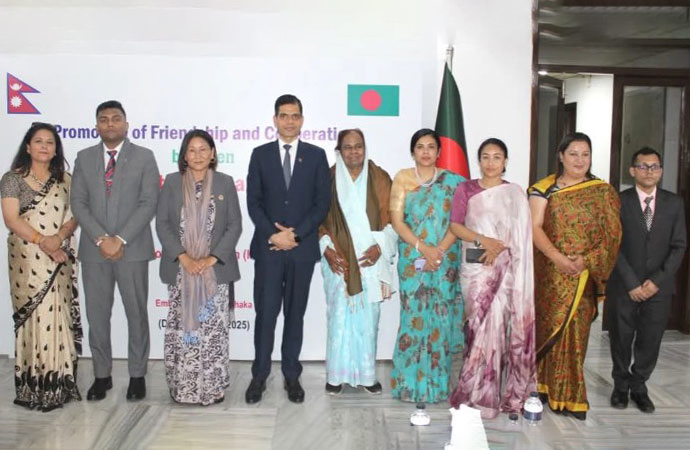Essays

There is a growing consciousness of the benefits of social protection. It plays a key role in achieving sustainable development, promoting social justice and realizing the human right to social security for all. Thus, social protection policies are vital elements of national development strategies to reduce poverty and vulnerability across the life cycle and support inclusive and sustainable growth by raising household incomes, fostering productivity and human development, facilitating structural transformation of the economy and promoting decent work. The Sustainable Development Goals (SDGs) adopted at the UN General Assembly in 2015 reflect the joint commitment of countries to implement nationally appropriate social protection systems for all, including floors for reducing and preventing poverty. In view of the ambitious goals to be achieved by 2030, the ILO publication "World Social Protection Report" provides a global overview on recent trends in social protection systems, including social protection floors. It highlights progress in expanding social protection as well as remaining gaps that need to be closed, and discusses key challenges to the realization of the right to social security. Based on new data, it offers a broad range of global, regional and country data on social protection coverage, benefits and public expenditures on social protection.
The report follows a life-cycle approach, starting with social protection for children, followed by schemes for women and men in working age, including protection in case of maternity, unemployment, employment injury and disability, and those for older persons, including pensions.
The World Social Protection Report contains seven chapters. The first chapter is mainly an introduction which provides a few key messages. While social protection is at the centre of the 2030 Development Agenda, it is not yet a reality for a majority of the world's population, despite some progress over the last few years. Still today only 29 per cent of the global population enjoys access to comprehensive social security systems, whereas 71 per cent are covered partially or not at all. At the same time the world is facing a number of fundamental challenges, such as demographic change, low economic growth, migration, conflicts and environmental problems. Employment patterns are evolving fast, with new forms of employment on the rise, with limited job and income security, and without adequate social protection. Growing income insecurity, including among the middle class, as well as decent work deficits have weighed heavily on perceptions of social justice and challenged the implicit social contract in many societies.
Chapter 2 focuses on social protection for children, in particular on child and family benefits, and addresses also the important complementarily between cash transfers and care services. Only 35 per cent of children worldwide enjoy effective access to social protection, even though with significant regional disparities. On average, 1.1 per cent of GDP is spent on child and family benefits for children aged 0-14, pointing to a significant underinvestment in children, which affects not only the children's overall well-being and long-term development, but also the future economic and social development of the countries they live in. Cash transfers for children have expanded in low and middle-income countries over the past decades, with a number of countries reaching universal social protection coverage of children (e.g. Argentina, Brazil, Chile and Mongolia). The third chapter addresses schemes and programmes ensuring income security for people of working age, and zooms in on maternity protection, unemployment protection, employment injury protection and disability benefits. Despite the positive developmental impacts of supporting childbearing women, only 41.1 per cent of mothers with newborns receive a maternity benefit, while 83 million new mothers remain uncovered. As only 21.8 per cent of unemployed workers are covered by unemployment benefits, 152 million unemployed workers remain without coverage. Data also show that only 27.8 per cent of persons with severe disabilities worldwide receive a disability benefit.
Chapter 4 focuses on income security in old age, with a particular emphasis on old-age pensions. Pensions for older women and men are the most widespread form of social protection in the world, and a key element in SDGs. Worldwide, 68 per cent of people above retirement age receive an old age pension, which is associated with the expansion of both non-contributory and contributory pensions in many middle- and low-income countries. However, benefit levels are often low and not sufficient to push older persons out of poverty. The next chapter addresses the important role of universal health coverage for achieving the SDGs, with a strong focus on urban-rural inequalities, long-term care and the major employment potential of achieving universal health coverage. ILO estimates show that the right to health is not yet a reality in many parts of the world, especially in rural areas where 56 per cent of the population lack health coverage as compared to 22 per cent in urban areas.
Chapter 6 sheds light on the recent trends and developments in the different regions of the world. Observed trends in social protection coverage vary substantially across regions and even between countries within the same region. In Africa, despite significant progress in the extension of social protection coverage, only 17.8 per cent of the population receives at least one social protection cash benefit, with significant variation across countries. In the Americas, 67.6 per cent of the population is effectively covered by at least one social protection cash benefit, primarily as a result of the extension of social protection systems over recent decades. In the Arab States, the lack of data allows only a partial assessment of effective social protection coverage. Coverage for old-age pensions is limited, estimated at 27.4 per cent, and is expected to persist due to the low share (32.9 per cent) of active contributors in the total labour force. In the Asia and Pacific region, only 38.9 per cent of the population is effectively covered by at least one social protection cash benefit, although significant progress has been made in strengthening social protection systems. It is worth mentioning that some countries have achieved universal coverage of children (Australia, Mongolia); others have extended maternity protection coverage (Bangladesh, India, Mongolia), or introduced non-contributory pension schemes to achieve universal coverage for older persons (China, Mongolia, New Zealand, Timor-Leste). In Europe and Central Asia, given relatively comprehensive and mature social protection systems, including floors, 84.1 per cent of the region's population has access to at least one cash social protection benefit.
The final chapter of the report concludes with the monitoring of social protection at the global level, including an assessment of challenges and opportunities in extending social protection to all to achieve the SDGs. With nearly half of the world population covered by at least one social protection benefit in 2015, many countries have come a long way in strengthening their social protection systems, including social protection floors to guarantee at least a basic level of social security to all. However, more efforts are necessary to ensure that the right to social security becomes a reality for all. While extending coverage is a primary objective, attention needs to be paid to benefit adequacy, as the levels of social protection benefits are often insufficient to bring people out of poverty and insecurity. Building inclusive social protection systems also requires the adaptation of social protection systems to demographic change, the evolving world of work, migration, fragile contexts and environmental challenges. n
The writer is an independent researcher.

























Leave a Comment
Recent Posts
Enayetullah Khan to represent ...
Enayetullah Khan, Editor-in-Chief of United News of Bangladesh (UNB), ...
The tragedy in Ahmedabad touch ...
Air crashes are inherently international incidents, and the emotions t ...
Asset recovery a key focus; breakthroughs from talks ..
'It'll inspire youths to build Bangladesh they dream ..
UK envoy Sarah Cooke happy with Yunus’ visit to Brit ..
Prof Yunus honoured with prestigious Harmony Award b ..